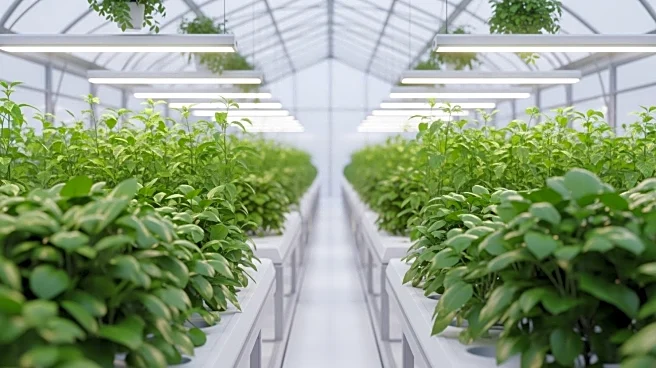What's Happening?
The urban farming market in the United States is anticipated to grow significantly, reaching $311.24 billion by 2032. This growth is driven by increasing urban populations, a rising demand for fresh and locally
sourced food, and the adoption of sustainable agriculture practices. Urban farming encompasses the cultivation, production, and distribution of crops, vegetables, fruits, and livestock within urban and peri-urban areas. Innovative methods such as vertical farming, hydroponics, and rooftop gardens are being leveraged to address food security, reduce supply chain costs, and promote sustainable agriculture. The market serves households, restaurants, and local retailers, driving eco-friendly, locally sourced food solutions. Recent developments include New York City's municipal grant program to support community hydroponic gardens and the integration of composting and circular economy practices in major U.S. cities.
Why It's Important?
The expansion of urban farming is crucial for addressing food security challenges in densely populated areas. By providing fresh, locally sourced produce, urban farms can reduce reliance on long supply chains and minimize transportation costs and emissions. This shift towards sustainable agriculture practices supports environmental goals and enhances urban resilience. Additionally, urban farming initiatives can stimulate local economies by creating jobs and fostering community engagement. The adoption of advanced technologies such as hydroponics and vertical farming further enhances productivity and resource efficiency, making urban farming a viable solution for meeting the growing demand for food in urban areas.
What's Next?
As urban farming continues to grow, further advancements in technology and infrastructure are expected. Governments and municipalities may increase support through regulations, grants, and incentives to foster urban agriculture. This could lead to more widespread adoption of innovative farming techniques and increased investment in indoor farming technologies. The focus on sustainability and local food production is likely to drive further integration of urban farms into city planning and development strategies, potentially transforming urban landscapes and food systems.
Beyond the Headlines
Urban farming not only addresses food security but also contributes to urban greening and biodiversity. By transforming unused spaces into productive gardens, urban farms can enhance the aesthetic appeal of cities and provide habitats for various species. Moreover, urban farming can play a role in community building, offering educational opportunities and fostering social cohesion. As cities continue to grow, the integration of urban farms into the urban fabric may lead to long-term shifts in how food is produced and consumed, promoting healthier lifestyles and sustainable urban living.











